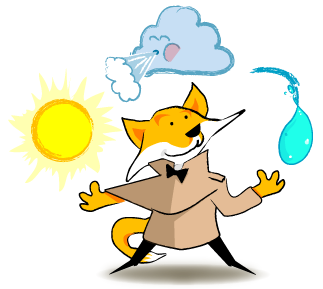Lesson 2: Investigating Interactions Between Objects
Overview
Students examine “interactions” between objects and practice making claims with supporting evidence. In the second part of the lesson, students link interactions to energy as they practice identifying the energy sources and the energy receivers in different situations.
Key Ideas
- Energy is the ability to change an object or substance in some way.
- When objects interact they act on or influence each other to cause an effect; a change.
- Scientists describe interactions between objects by making claims supported by evidence.
- Evidence that an interaction occurred usually includes one or more (observable) changes in one or both of the objects interacting including motion, sound, temperature, size, shape, illumination, and color or pattern.
- In an interaction there is an energy source and an energy receiver.
Lesson Goals
Students will:
- describe energy as the ability to change an object or substance in some way.
- recognize the influence (mutual or reciprocal action) that objects have upon one another as an “interaction.”
- practice making claims based on evidence.
- describe interactions in terms of energy. For example, energy sources and energy receivers can be identified for various interactions.
- recognize that objects can be both an energy receiver and an energy source.
Lesson Resources
 Download Lesson Plan ( 13 pages, 644 KB)
Download Lesson Plan ( 13 pages, 644 KB)
 Student Handout 2.1: Mapping Energy Sources and Energy Receivers (1 page, 392 KB)
Student Handout 2.1: Mapping Energy Sources and Energy Receivers (1 page, 392 KB)
 Student Handout 2.2: Mapping Multiple Energy Sources and Energy Receivers (1 page, 392 KB)
Student Handout 2.2: Mapping Multiple Energy Sources and Energy Receivers (1 page, 392 KB)
 Student Handout 2.3: Scientists' Meeting Minutes - Reflection and Discussion of Interaction Stations (2 pages, 488 KB)
Student Handout 2.3: Scientists' Meeting Minutes - Reflection and Discussion of Interaction Stations (2 pages, 488 KB)
 Teacher Resource 2.1: Writing Claims and Evidence Framework (1 page, 393 KB)
Teacher Resource 2.1: Writing Claims and Evidence Framework (1 page, 393 KB)
 Teacher Resource 2.2: Interaction Stations Directions (5 pages, 792 KB)
Teacher Resource 2.2: Interaction Stations Directions (5 pages, 792 KB)
 Teacher Resource 2.3: Interaction Station Teacher Notes (2 pages, 508 KB)
Teacher Resource 2.3: Interaction Station Teacher Notes (2 pages, 508 KB)
 Teacher Resource 2.4: Paper Spiral Template (1 page, 456 KB)
Teacher Resource 2.4: Paper Spiral Template (1 page, 456 KB)
Online Extensions
Basketball Bounce in high speed (super slow motion) video
Racquetball Bounce in high speed (super slow motion) video
Paddleball in superslow motion is a whole new game! (Time Warp video)
Connections to Maine Agencies
A Maine Energy Education Representative Program (MEEP) representative will come to interested schools, free of charge, to guide and support the concepts in this lesson.
For schools in Aroostook County, a Maine Public Service (MPS) representative will come to interested schools, free of charge, to guide and support the concepts developed in this lesson.


